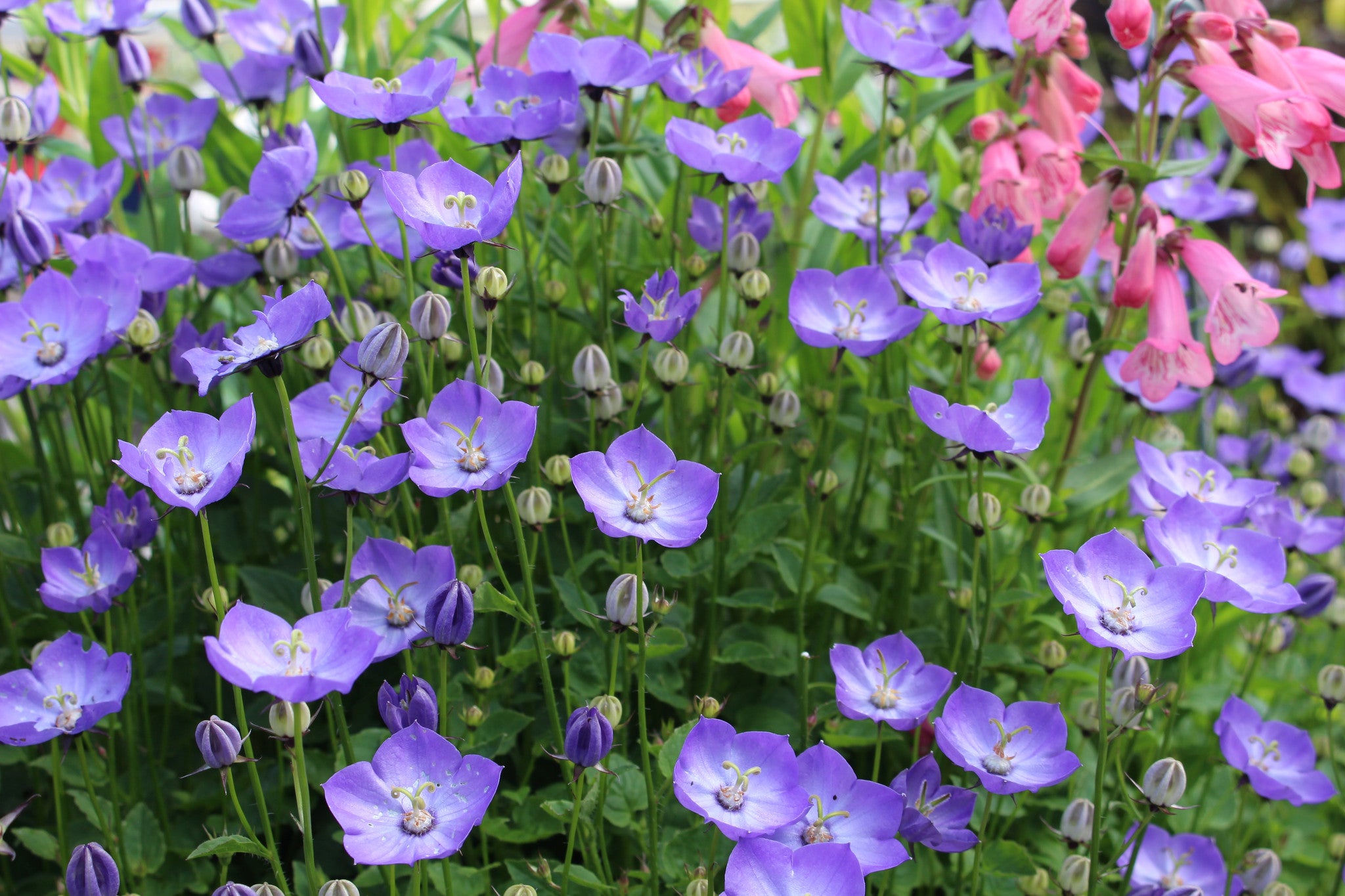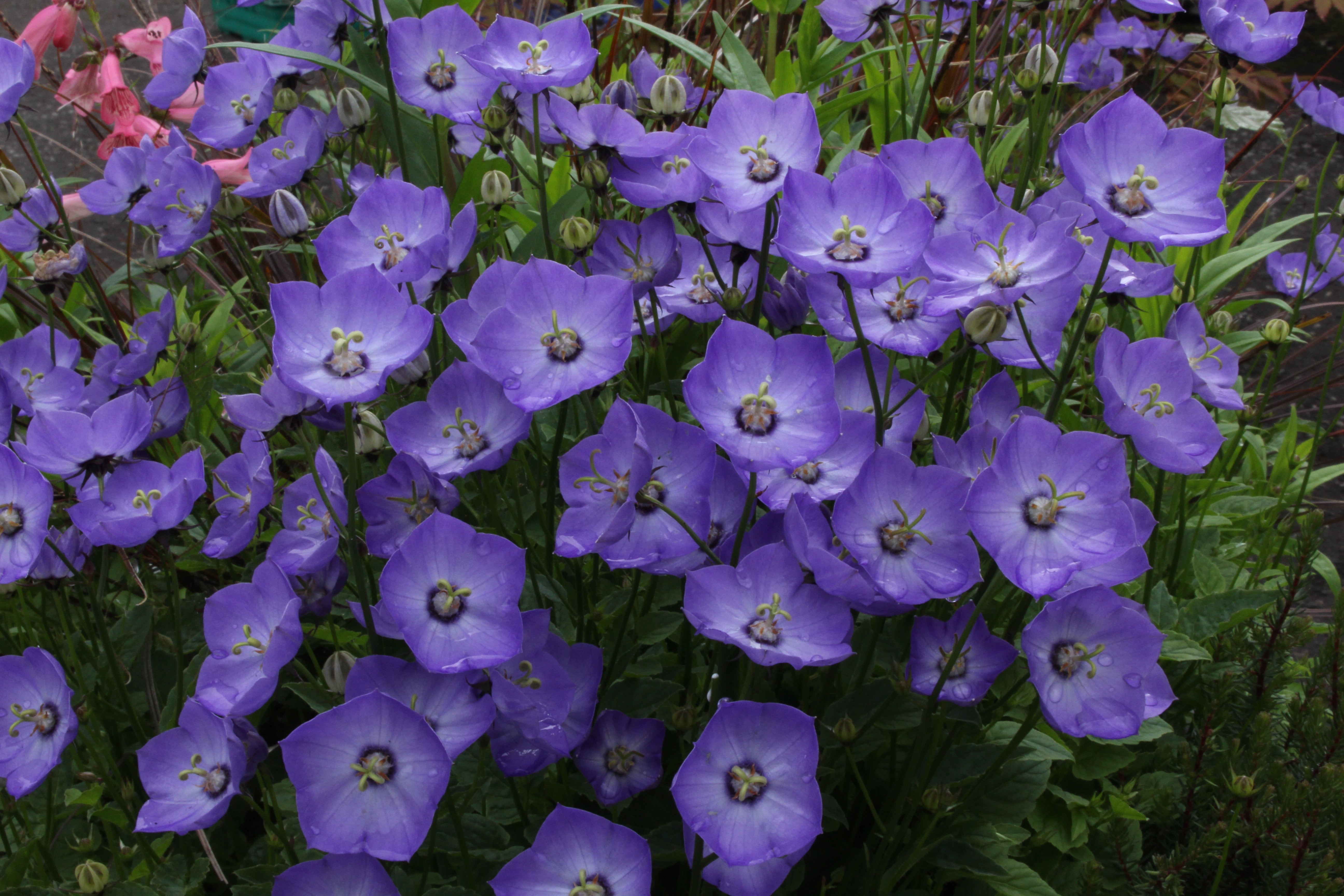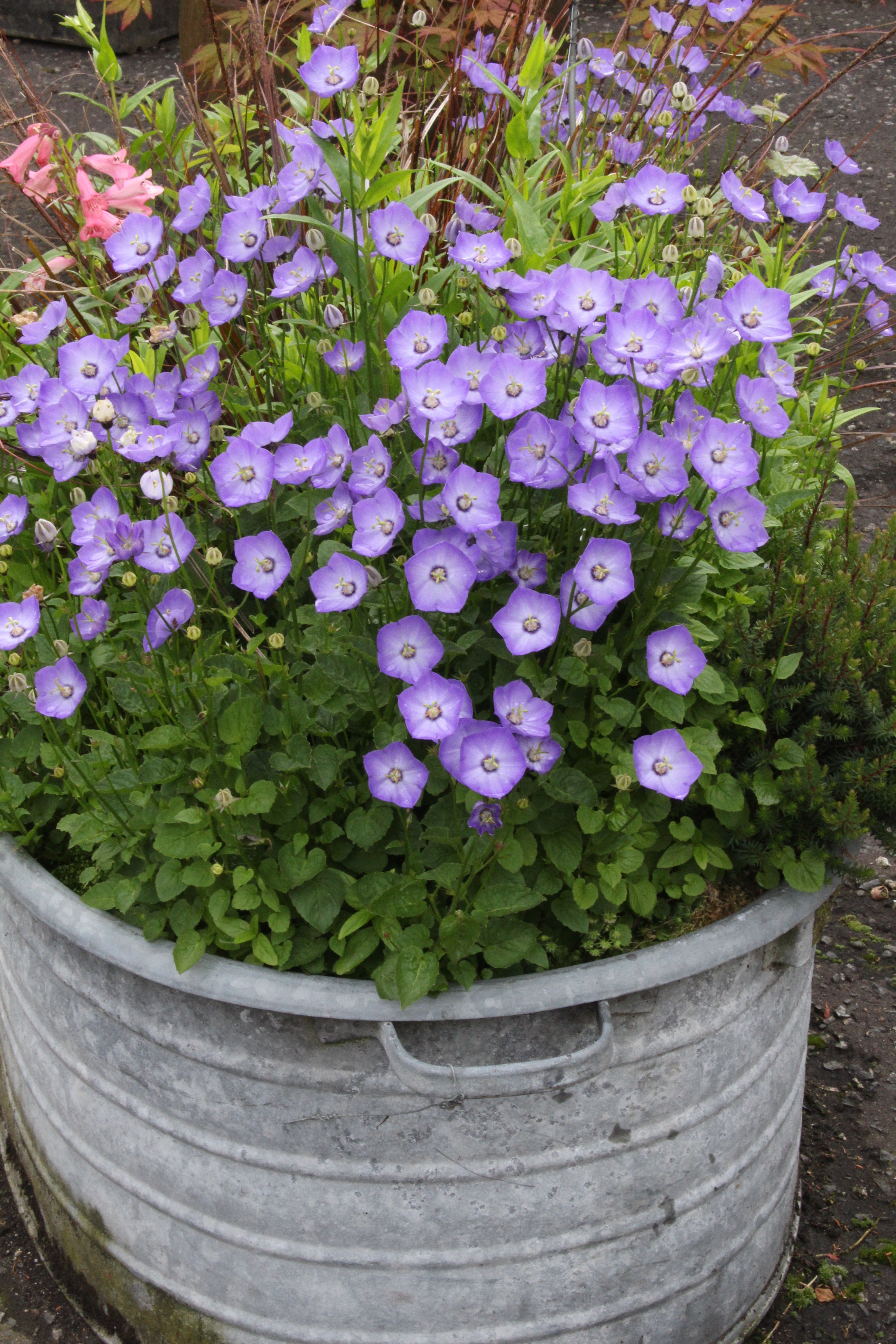Campanula 'Samantha'
Approx. 0.5 litre pot
About this cultivar:
Campanula 'Samantha' was named by Diana Reeck of Collectors Nursery after her granddaughter. This dwarf carpatica hybrid is compact in habit. Thus she is ideal for rock gardens, edging, or growing in containers. Plants form a low mat of deep green foliage, bearing short sprays of fragrant mauve-blue flowers, that last from Spring until Autumn. This long flowering period is perhaps her best virtue, close to the fact she doesn't spread aggressively.
- Position: Full sun, partial shade
- Soil: Almost any soil, grows well in Ballyrobert
- Flowers: June, July, August, September
- Other features: Great Ground Cover, Grows well in Ballyrobert
- Hardiness: Fully hardy - grows well in Ballyrobert!
- Habit: Bushy, Clump forming
- Foliage: Deciduous
- Height: 15 - 30 cm (0.5 - 1 ft)
- Spread: 30 - 60 cm (1 - 2 ft)
- Time to full growth: 2 to 5 years
- Plant type: Herbaceous Perennial
- Colour: Purple, green
-
Goes well with: Hosta, Geranium, Lupin, Inula, and Phlox.
About this genus:
Campanula is a wide-ranging genus (over 500 species!) of plants that contains everything from rare, difficult-to-grow wimps to vicious invasive thugs. Over the years, we have killed (with love or violence) several Campanula cultivars and discarded others, but along the way we found some gems that do great in our own garden: no weaklings and no violent spreaders. We offer them, all perennials, here.
Campanula are late spring and summer flowering perennials that prefer partial sun - but many will tolerate deep-shade and full-ish sun. They grow well in a variety of soils - almost anywhere that isn't too extreme. Campanula usually produce bell-shaped flowers that attract all sorts of wildlife. This feature is so emblematic, that plant taxonomists have even coined the word "campanulate" to mean any bell-shaped flower (note also that Campanula is Latin for "little bell"). However some species of Campanula have 'split-open-type' bell flowers which may start life looking bell-like but soon don't look like bells at all (unless you folded them and glued them together in some origami style).
When deciding plant combinations for the genus it is difficult because the cultivars vary so much! From ground cover to 6 feet tall! So in this section I don't think I'll bother and maybe try to be specific to the cultivar on offer. Having said that, Campanula are the one of the most versatile plants in the garden which might explain their ubquity..






